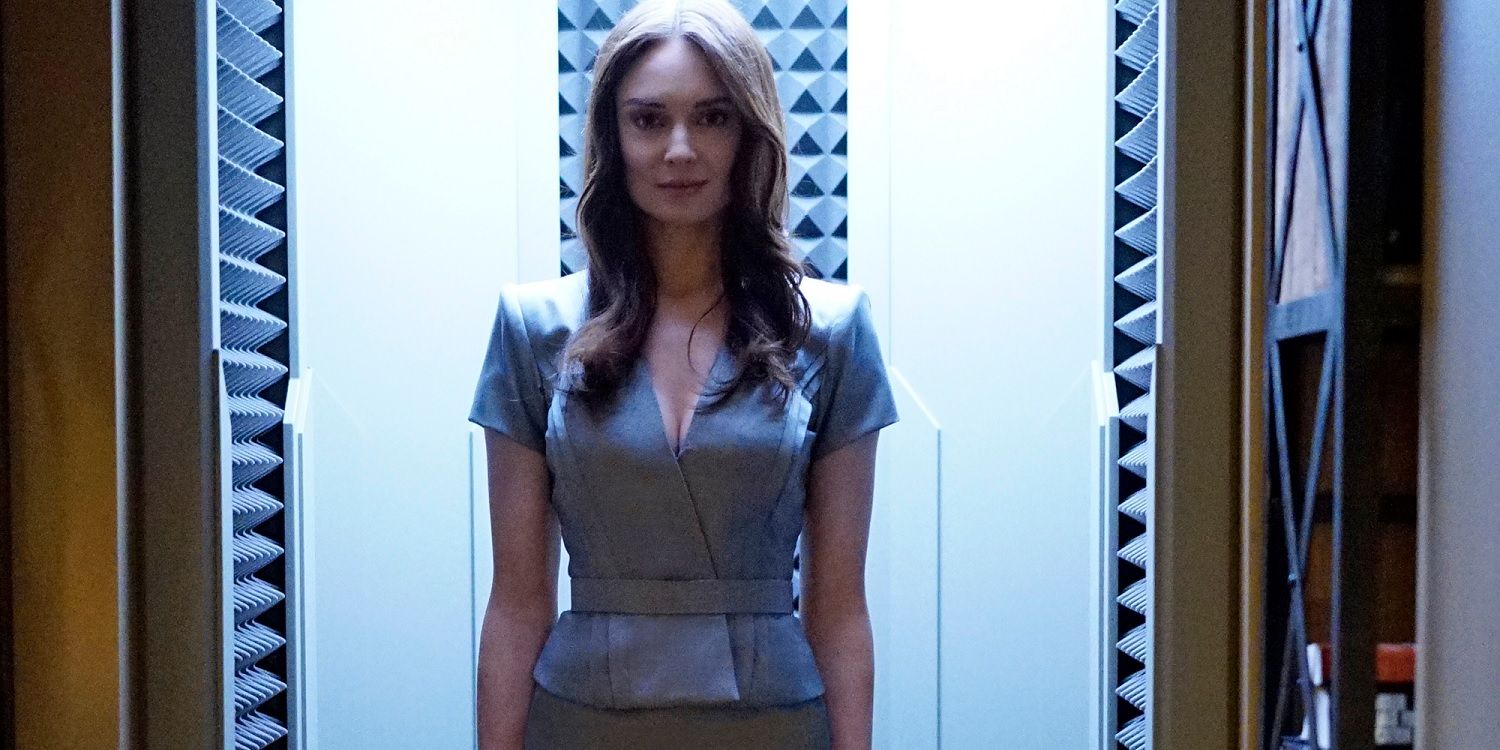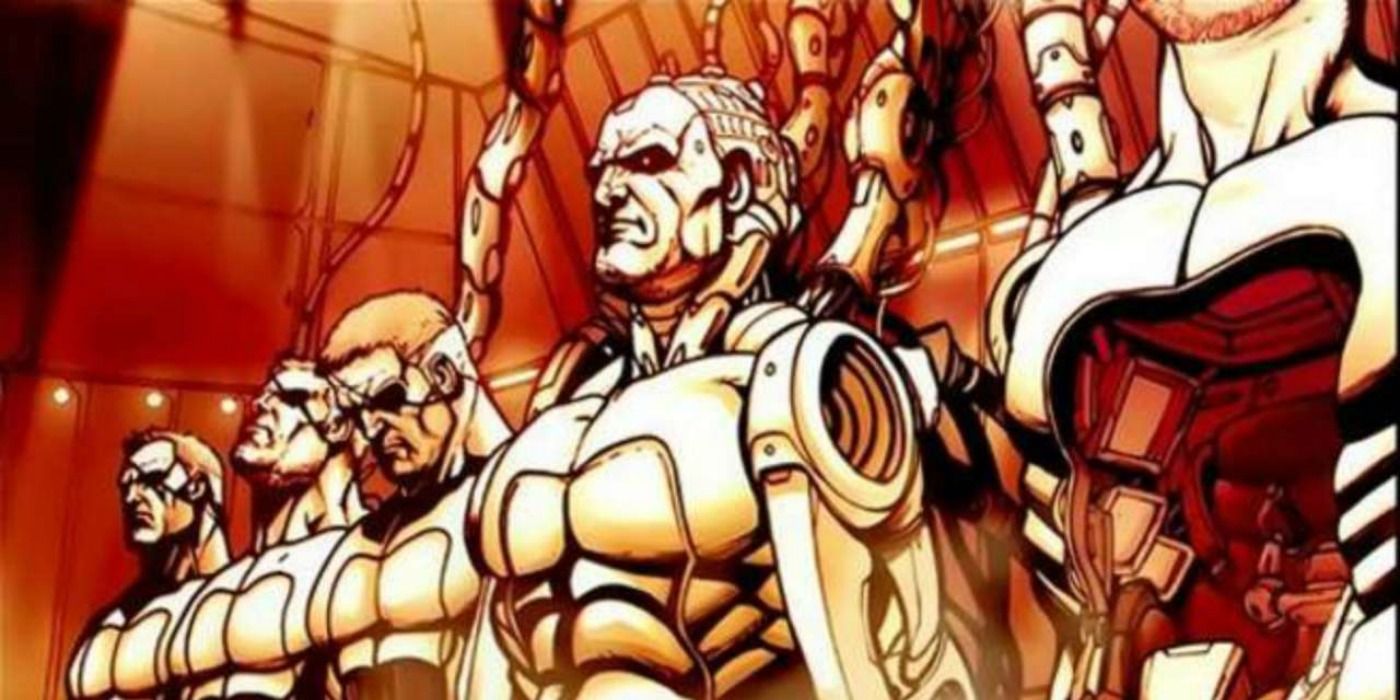Warning: MAJOR SPOILERS for Agents of S.H.I.E.L.D. ahead
-
The surprise reveal of Agent Melinda May (Ming-Na Wen) in the mid-season finale of Agents of S.H.I.E.L.D. as a Life-Model Decoy not only helps fill the void that the sudden absence of Ghost Rider (Gabriel Luna) leaves behind – answering the question of what the series will focus on moving forward – but it also serves as something of yet another tie-in to the greater Marvel Cinematic Universe, helping to link the seemingly far-flung movies to their television brethren.
Given the importance that the decoys will now have in S.H.I.E.L.D. – and, quite possibly, the rest of the MCU – it might behoove us to ask what, exactly, they are, how their comic-book counterparts might influence their on-screen adventures, and what this might mean for the shared universe moving forward.
What is an LMD?
In the Marvel comic universe, a Life Model Decoy is a special kind of android that is so lifelike, it can be used to stand in for a living, breathing individual under certain circumstances or for specific reasons. Typically, this is to allow the living, breathing person behind the robot to remain out of harm’s way, although there have been a series of nefarious reasons throughout Marvel history, as well (as we saw in this week’s “The Laws of Inferno Dynamics”). Since they mimic nearly every last detail of the human they're based on - from fingerprints to retinal scans - LMDs are virtually indistinguishable from the real target. They can even be programmed to duplicate one’s thought patterns, just in case any telepaths may be in the vicinity.
But there is a whole set of secondary functionalities that set the decoys apart from all other forms of robotics even further. They can relay everything they see and hear to their end users, and even afford them the ability to remote-control their doppelgangers (though the androids are fully able to operate autonomously, as well). They possess superhuman strength, speed, and stamina, as well as near-invincibility, thanks to a host of nanites residing within their bodies that can repair damage so amazingly fast, they’re often compared to how Wolverine’s healing factor operates. Indeed, one of the few ways to stop an LMD – and to expose its true nature – is to utilize an electromagnetic pulse wave, which fries all electronics it comes into contact with.
LMDs in the comics
Life Model Decoys have been prevalent in the comic source material since they were first introduced in 1965, and their number of uses have been, unsurprisingly, manifold.
Nick Fury (played by Samuel L. Jackson in the films and television series), the longtime director of S.H.I.E.L.D., has been the biggest practitioner of deploying the stand-ins, doing so on innumerable occasions – leading to the recent revelation that the various residents of the Marvel Universe hadn’t seen the real Fury for several years straight. Dum Dum Dugan (Neal McDonough) unknowingly resided in one android or another for years; after his body gave out on him, his good friend Director Fury secretly transferred his consciousness to one LMD after another, essentially providing him with immortality, even if he himself wasn’t aware of his newfound state of existential affairs. General Thaddeus Ross (William Hurt) employed a decoy to cover the fact that he had become Red Hulk. Other LMDs believe themselves to actually be the individuals they’re meant to replace; some have gone crazy and become supervillain nuisances for their various superhero rivals.
It’s easy to see how the Agents of S.H.I.E.L.D. showrunners have co-opted bits and pieces of these various storylines already – right now, May’s replacement primarily draws from Fury’s surreptitious usage, though we have yet to see whether this doppelganger is acting autonomously or whether she will ultimately evolve to become one of the good guys on S.H.I.E.L.D.’s side (or, even, she’ll come to believe that she is May – or should be).
Ramifications for the rest of the MCU
On the one hand, the introduction of the Life Model Decoy story thread is a natural expansion of S.H.I.E.L.D.’s series-spanning theme of body augmentation, which started right in the series premiere with the introduction of the Deathlok program and continued right through to the third season’s unveiling of Dr. Holden Radcliffe (John Hannah), the world’s leading proponent of transhumanism. On the other hand, however, the move represents another callback to the film side of the Marvel Cinematic Universe, as LMDs are (jokingly) referenced in the first Avengers, when Tony Stark (Robert Downey, Jr.) attempts to pass himself off as one in order to shirk Agent Phil Coulson’s (Clark Gregg) phone call (grabbing onto such seemingly throwaway elements from the movies and infinitely expounding upon them is precisely why the series is the heart of the MCU).
And since both the big- and small-screen halves of Marvel’s multimedia empire have now referenced the androids, it truly opens the lid on their potential with and implementation in the meta-franchise’s future. The list of characters who have used the robots at one point or another in the comic books only reinforces this: Iron Man, Captain America (Chris Evans), Black Widow (Scarlett Johansson), Ant-Man (Paul Rudd), the Winter Soldier (Sebastian Stan), Maria Hill (Cobie Smulders), and, even, Dr. Arnim Zola (Toby Jones) and Baron Wolfgang von Strucker (Thomas Kretschmann), just to limit it to the more cinematic-relevant names. This could be a way to bring back dead characters – just in case Marvel doesn’t want to employ those pesky Infinity Stones, that is – or to provide the same type of shock twists that S.H.I.E.L.D. just leveled on audiences.
Closer to home, however, and in the nearer future, it would seem that Marvel’s flagship television series will attempt to deploy the quickly-expanding Life Model Decoys in an effort to further unite its disparate plotlines; the Inhumans already started this process, by intertwining their existence with everything from Hydra’s secret history to Coulson’s miraculous return from death, and now the LMDs can be the bridge between the human-alien hybrids, the Watchdogs militia group, and the supernatural theatrics of Ghost Rider, whether he returns to S.H.I.E.L.D. or receives his own spinoff show.
We’ll find out when Agents of S.H.I.E.L.D. returns from its mid-season hiatus early next year.




